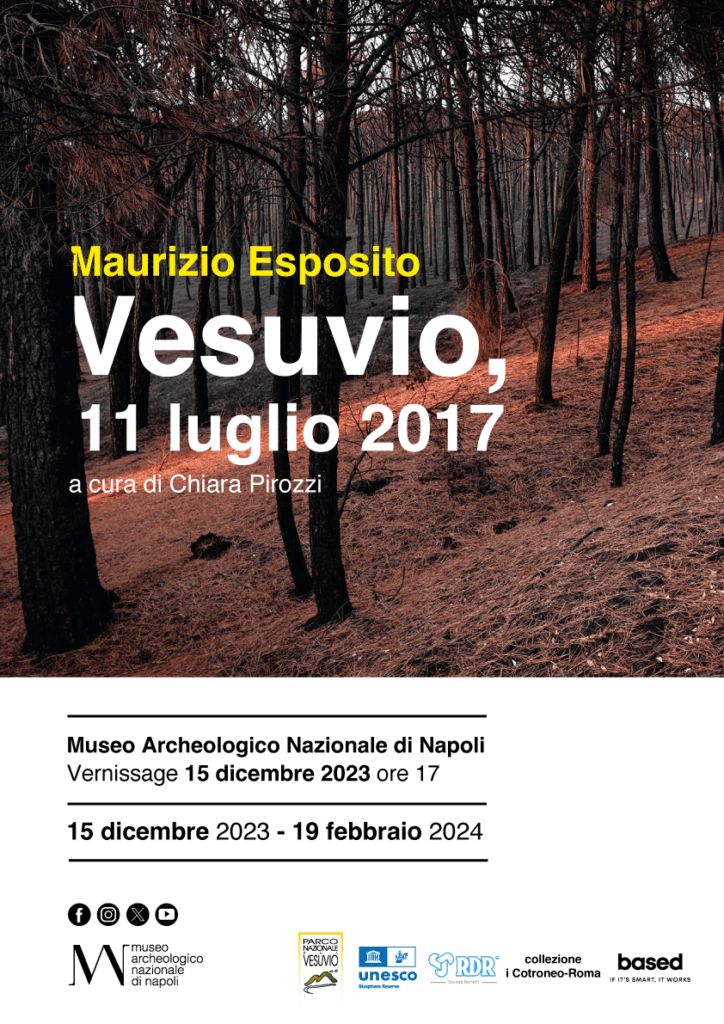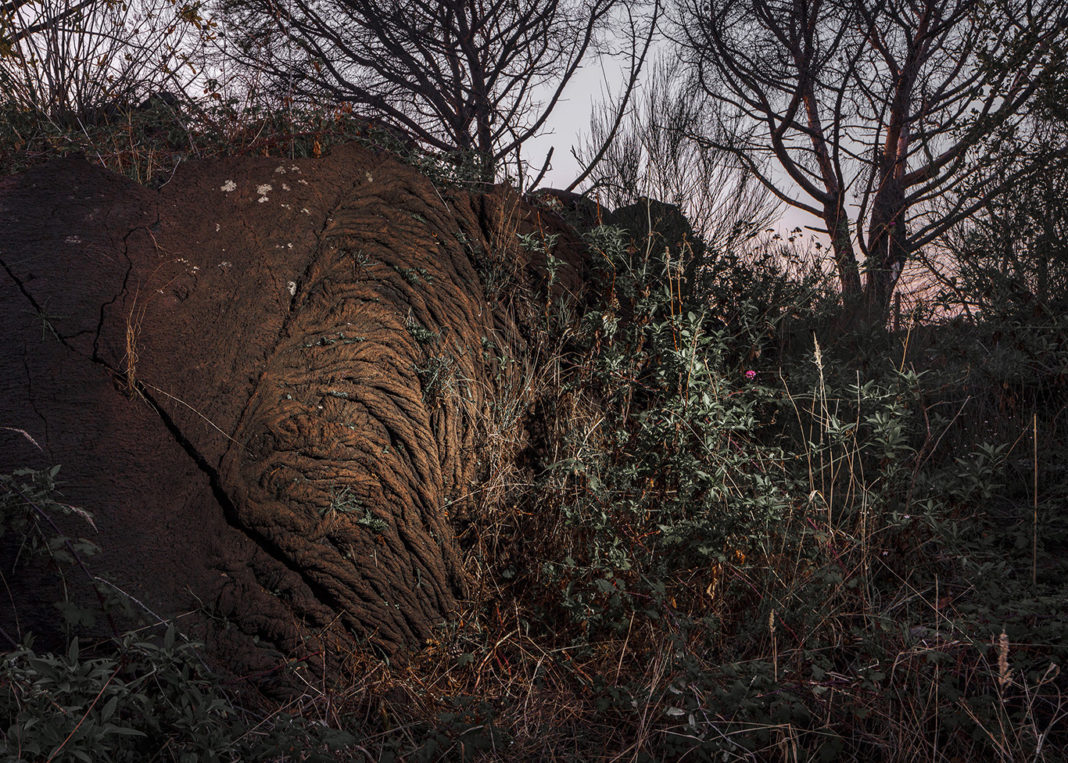Vesuvio, 11 luglio 2017. Questo il titolo scelto per la mostra fotografica del napoletano Maurizio Esposito, a cura di Chiara Pirozzi che si inaugura domani al Museo archeologico di Napoli nelle sale 25 e 26 della collezione Farnese. Immagini (foto) che narrano le ferite nel territorio sui fianchi del vulcano, dopo l’incendio del 2017 che cancellò gran parte della zona boschiva.
Volontario nella prima fase del soccorso, Esposito ha voluto concentrare su quelle cicatrici la propria indagine fotografica durata oltre tre anni.
Nel tempo è riuscito anche a immortalare una natura che si riappropria dei suoi spazi. «La fotografia – racconta l’autore- mi ha permesso di cambiare la realtà, le scene di morte sono diventate altro. Sono andato alla ricerca di quell’energia vitale che era nascosta nel Vesuvio distrutto, nei suoi colori, nelle sue forme e nella luce del sole. In quei luoghi di morte ho cercato quello che era rimasto della vita».
Viaggio visivo nel paesaggio vesuviano dove emerge una radicata familiarità con quell’ambiente, ma anche una riflessione sul rapporto tra uomo e natura che, oltre la distruzione, può generare ipotesi di rinascita. Diciotto fotografie dal grande formato, 100 x 71 cm vanno incontro a chi guarda fino a farlo sentire parte integrante e attiva della realtà ripresa.
Il percorso espositivo della mostra si inserisce nella collezione farnese del Mann, dando vita a un dialogo (poetico) fatto di storie, testimonianze e memorie. A unirle è la luce, che si manifesta attraverso le ombre plastiche della scultura classica e la luminosità che filtra negli scatti di Maurizio Esposito, catturando cenere, neve, roccia magmatica increspata dalle radici sinuose degli alberi, dolore e ugualmente lenta rinascita.
La mostra è stata realizzata grazie al sostegno di Ente parco Nazionale del Vesuvio, RDR e Collezione “i Cotroneo-Roma”. Dal 15 dicembre (opening alle 17) fino al 19 febbraio 2024, tutti i giorni ore 9.00/19.30, martedì chiuso).

The exhibition at the Mann / The wounds of Vesuvius, after the 2017 fire. Maurizio Esposito photographs the (dramatic) poetry of the landscape
Vesuvius, July the 11th, 2017. This, the title chosen for the photographic exhibition by Neapolitan Maurizio Esposito, curated by Chiara Pirozzi, which opens tomorrow at the Archaeological Museum of Naples in rooms 25 and 26 of the Farnese collection. Images that narrate the wounds in the territory on the flanks of the volcano, after the 2017 fire that wiped away much of the forested area.
A volunteer in the first phase of the rescue, Esposito wanted to focus his own photographic investigation that lasted more than three years on those scars.
Over time, he also managed to capture a nature reclaiming its space. “Photography,” says the author, “allowed me to change reality, the death scenes became something else. I went in search of that vital energy that was hidden in the destroyed Vesuvius, in its colors, shapes and sunlight. In those places of death I searched for what was left of life.”
Visual journey through the Vesuvian landscape that brings out a deep-rooted familiarity with that environment, but also a reflection on the relationship between man and nature that, beyond destruction, can generate hypotheses for rebirth. Eighteen large-format photographs, 100 x 71 cm meet the viewer to the point of making him or her feel an integral and active part of the reality filmed.
The exhibition path of the exhibition fits into the Mann’s Farnese collection, giving life to a (poetic) dialogue made of stories, testimonies and memories. Uniting them is light, manifested through the plastic shadows of classical sculpture and the luminosity filtering through Maurizio Esposito’s shots that capture ash, snow, magmatic rock rippled by the sinuous roots of trees, pain and equally slow rebirth.
The exhibition was made possible thanks to the support of Ente Parco Nazionale del Vesuvio, RDR and Collezione “i Cotroneo-Roma.” From December 15th (opening at 5 p.m.) until February 19th, 2024, daily 9 a.m.-7:30 p.m., Tuesday closed).










